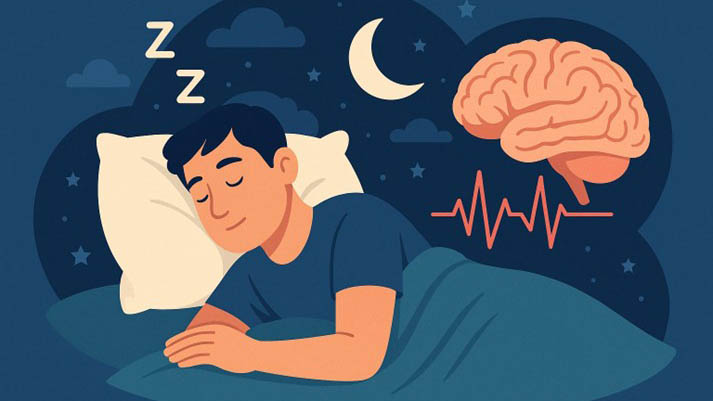By Cagri Yuksel
My fascination with how the human brain processes fear began with a simple observation: people react very differently after experiencing trauma. Some individuals bounce back and regain emotional balance quickly, while others remain profoundly affected, developing conditions like post-traumatic stress disorder (PTSD). Why does this happen? Could our sleep patterns, particularly rapid-eye movement (REM) sleep—a sleep stage marked by heightened brain activity and thought to support the processing of emotional memories—hold some answers?
Fear extinction is the process by which we reduce our emotional response to a frightening experience by repeatedly encountering reminders without experiencing harm. It’s like gradually learning not to fear dogs after a scary incident with one. However, many trauma-exposed individuals struggle with this, and that’s thought to be a critical factor behind PTSD. Interestingly, separate lines of emerging research suggest that REM sleep and the body’s “rest-and-digest” system—governed by the vagus nerve, a major nerve that connects the brain to internal organs and plays a key role in regulating heart rate, digestion, and emotional state—may be vital for strengthening this fear extinction memory.
With this in mind, in collaboration with Dr. Edward F. Pace-Schott at Massachusetts General Hospital, we asked whether disrupted REM sleep, along with vagus activity during this sleep stage, could be associated with impaired fear extinction in trauma-exposed individuals. To find out, we studied 113 people who had experienced trauma. They participated in experiments involving fear conditioning, extinction learning, and recall. Essentially, we conditioned participants to associate a harmless signal with a mild, unpleasant shock. Then, we taught them that this signal no longer predicted the shock. Afterward, we tested how well they remembered this extinction 24 hours later, following a night’s sleep.
Our findings were striking. Individuals whose REM sleep was disrupted showed weaker extinction memories—they were more likely to still react fearfully to harmless signals. Even more interestingly, those with higher vagal activity (measured by heart rate variability) during REM sleep showed better extinction memory. In other words, a calm, “rest-and-digest” response during REM sleep was associated with better emotional recovery.

REM sleep and vagal nerve activity may play a crucial role in how the brain recovers from fear. These findings could open the door to innovative therapies for PTSD and related conditions. Image generated by Cagri Yuksel.
Why is this exciting? For the first time, we have evidence that the activity of the vagus nerve during REM sleep may be related to how effectively our brains process and consolidate emotional experiences. This insight could open up entirely new approaches for preventing and treating PTSD and similar disorders. Imagine improving sleep or even directly stimulating vagal activity to help trauma-exposed individuals recover more effectively—this could significantly enhance current therapies.
What’s next? Our research will explore whether interventions that enhance vagal activity during sleep, like non-invasive stimulation techniques, could strengthen fear extinction memories and resilience against PTSD. Understanding these processes better could fundamentally change how we help those suffering after trauma, turning REM sleep into a powerful ally in mental health.
Cagri Yuksel is an Assistant Professor of Psychiatry at Harvard Medical School and McLean Hospital.
Learn more in the original research article:
REM disruption and REM vagal activity predict extinction recall in trauma-exposed individuals
Yuksel C, Watford L, Muranaka M, Daffre C, McCoy E, Lax H, Mendelsohn AK, Oliver KI, Acosta A, Vidrin A, Martinez U, Lasko N, Orr S, Pace-Schott EF. Psychol Med. 2024 Dec 9;54(16):1-12.
News Types: Community Stories
